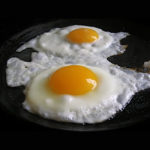By Ben Fuchs | Pharmacist Ben
(PharmacistBen) A very strange cultural myth has somehow become health dogma (defined as an authoritative principle, belief, or statement of ideas or opinion, especially one considered to be absolute truth) despite little definitive evidence to support it. A biochemically ignorant speculation and hypothesis (experiment) that many of us have bought into is that you can poison your body and your body’s cholesterol manufacturing system with cholesterol lowering drugs, and somehow be the better for it.
This is very important as millions of Americans (an astounding 1 out 8 or 9 Americans) are on one or another. One out of every 4 adults over the age of 45 is on a statin drug. This, despite the fact, that there are hundreds of studies demonstrating their toxicity and relationship to all kinds of health issues ranging from muscle pain to brain and memory problems. Stain drugs have even been linked to diabetes and cancer; two of top three the leading causes of death.
Cholesterol control is best thought of as sugar control. There’s a reason why diabetes and elevated blood cholesterol go hand in hand. But the thing about diabetes is that the designation of it (or the determination of it) is arbitrary. That’s right! Whether or not you’re officially considered a diabetic is arbitrarily determined by the magic of the medical model and the black magicians who come up with so-called diagnostic standards.
According to the American Diabetes Association, there are three main tests that determine whether or not you’re a diabetic. The A1C test measures blood glucose as an average over the course 2 to 3 months. You’re considered a diabetic if you’re A1C score is greater than 6.5%. The Fasting Blood Glucose test is the second test doctors use to assess diabetes. As the name implies, you have to fast for at least 8 hours before this test, and you’re considered a diabetic if your blood glucose is over 126 mg per dl of blood (which works out to about a teaspoonful of glucose for the entire gallon or so of blood that circulates in the average human body). The third test is called the Oral Glucose Tolerance Test, and that measures blood sugar before and after you drink a super sweet glucose drink. If your blood sugar is over 200 after you take an oral glucose tolerance test, the doctor will pronounce you officially a diabetic.
The problem with these tests is no one really knows just exactly what a healthy or appropriate blood sugar should be. All of these numbers and determinations are based on bell curves, reference values, and statistics. Human beings are individuals. To take care of our health, we have to recognize our specific, individual biochemical nature. To superimpose statistics and bell curves on top of individuals is BAD SCIENCE.
Does it make sense to anyone that if your fasting blood sugar is recorded as 125 mg per dl, you are non-diabetic, but if you’re at 126, all of a sudden you have a disease? If you’re at 125, you can go about your business as usual because you’re healthy. No, our blood sugar is still way too high, and just because the medical model hasn’t officially pronounced us diseased, our sugar chemistry is definitely wacked, and we are most assuredly not healthy.
Pretty much all adults (or at least those who are subsisting on the SAD) can assume that blood sugar control is not good. Dysglycemia is part and parcel of our modern lifestyle and of the aging process. A sure sign that your blood sugar is starting to get thrown off is a pot belly. Do you know ANYONE who doesn’t have a little pooch going on? How many people are able to say their gut is the same size when they’re 40 as when they are 20? High blood pressure is another dysglycemic red flag and, most assuredly, so is elevated blood fats and cholesterol.
Think cholesterol and blood fats, think blood sugar. The best way to lower your cholesterol naturally is to lower blood sugar by eating less food that spikes blood sugar and by eating less food in general. Dysglycemia is a food and eating health issue; it’s not a drug issue. Because elevated blood cholesterol is about dysglycemia, if you want to lower your blood cholesterol, change the way you eat: more protein and less sugar. And EAT MORE FAT, and EAT MORE CHOLESTEROL!! (I know this is contrary to all the conventional crapola that you hear from mainstream lobbyist groups, but they care more about your money than your health.) Organizations (really, big business corporations) like the American Heart Association and the American Diabetes Association have presided over the biggest increases in heart disease and diabetes IN THE HISTORY OF MANKIND. When, in fact, the more cholesterol you eat, the less cholesterol your body makes! In other words, cholesterol-containing foods are nature’s non-toxic, healthy statin drugs. Tell that to the next boneheaded medical doctor who warns that you better start taking a toxin that poisons the liver cells so they can’t produce this incredibly important biomolecule!
In addition to consuming cholesterol, using sugar-metabolizing supplements can help. The Chromium and Vanadium in the product Sweet Eaze can help lower blood sugar and can lower blood cholesterol. The Sweet Eaze is like a natural statin drug without the drug toxicity. The B-vitamins are incredibly important for blood sugar metabolism. Beyond Tangy Tangerine is loaded with the B-vitamins. If you’re a diabetic (and remember we all are to some extent), you would be very wise to use some BTT after all sweets as well as starchy meals (bread, pasta, potatoes, etc.). Thiamine is especially important for lowering blood sugar. Niacin is one of the most critical of all nutrients for helping the body process sugar. And not coincidentally, niacin is one of the most important nutrients for the liver, and is just as effective at lowering cholesterol as statin drugs. You’ll get a good dose of niacin in the Beyond Tangy Tangerine, but if you’re seriously concerned about elevated blood cholesterol, you might want to add in a 100mg daily dose of time-release niacin too.















